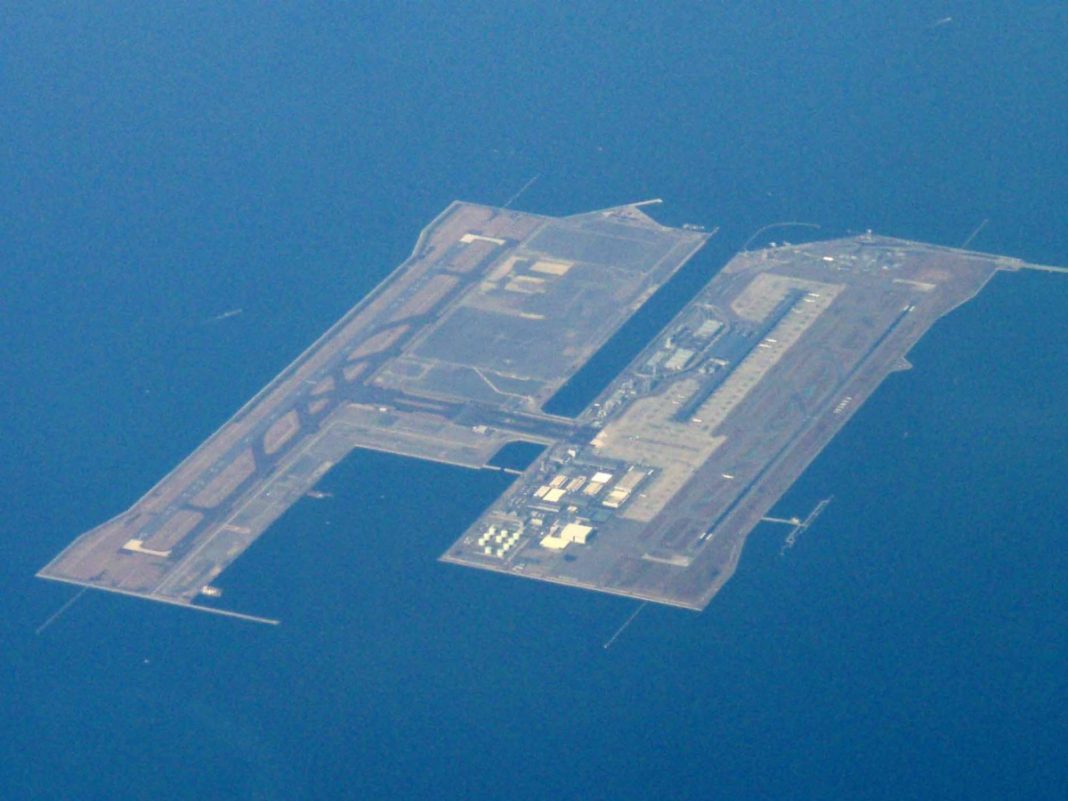At the time, the construction of Osaka’s new Kansai International Airport (KIX) was the biggest civil project ever undertaken. Why was this airport built when Osaka already had an airport? Let’s explore.

The problem with Osaka’s original airport
Back in the late 1960s, the Kansai region of Japan found itself losing trade, development, and firms to the more significant and growing Tokyo region. To help make Osaka and Kobe more attractive, they proposed the construction of a new international airport to rival the under development Toyko second airport (which would become Narita International Airport).
Osaka’s Itami Airport (the original one) was also facing overcrowding as air travel became more popular. With the development of bigger aircraft like the Boeing 747 and the arrival of short-haul Boeing 737s that made rapid frequencies possible, the city needed to consider either expansion or a new airfield.
The issue with the first idea was that the Itami Airport was in the densely populated areas of Itami and Toyonaka – surrounded by buildings and was impossible to expand.
Thus the planners needed a new facility somewhere in the region.
Planning the new airport
At first, developers and government officials wanted to build the new airport new Kobe. It made sense, as the city didn’t have a large international airport, and passengers wouldn’t have to fly far to travel to both cities.
This plan ran into hiccups almost right away, with the city of Kobe itself rejecting the plans for the large international airport. Sensing an opportunity, the planners then moved the airport to the southern bay of Osaka Prefecture – by being away from all residential suburbs and land, the airport would be able to operate 24 hours a day.
They planned an artificial island that would be 4 km (2.5 mi) long and 2.5 km (1.6 mi) wide for the new airport. It would require sophisticated engineering not only to have a solid foundation for the runways and the buildings but also to withstand the risks of typhoons, waves, and earthquakes.

These special design features would actually come into play during an earthquake many years later. While the city suffered significant damage, the airport survived unscathed (although the airport would be flooded after a typhoon)
Building the airport
The ground was finally broken in 1987, a good twenty years since the project began. It would take over three years to build the island and the total mass of three nearby mountains. To connect the island to the mainland, the team constructed a three-kilometer bridge (which itself cost a billion dollars).
Once they had finished building the island, the airport construction could begin – this took another four years. It would have two runways, two terminals, cargo facility and cost over $20 billion US to build.

Changing the aviation landscape of Japan
This airport dramatically changed aviation in Japan.
For one, it almost immediately took over all international flights to Osaka, rendering the original Itami Airport as strictly domestic only. At the peak of its performance in 2016, the airport recorded 25.2 million passengers (the third busiest in Japan). The airport serves as an international hub for ANA and Japan Airlines.
Construction of this mega project would be well studied and would be the template for many other island-based airports around the world. A notable example is Hong Kong International Airport, and ironically, Kobe’s new airport opened in 2006.
What do you think? Have you flown into this airport? Let us know in the comments.
[ad_2]
Source link


